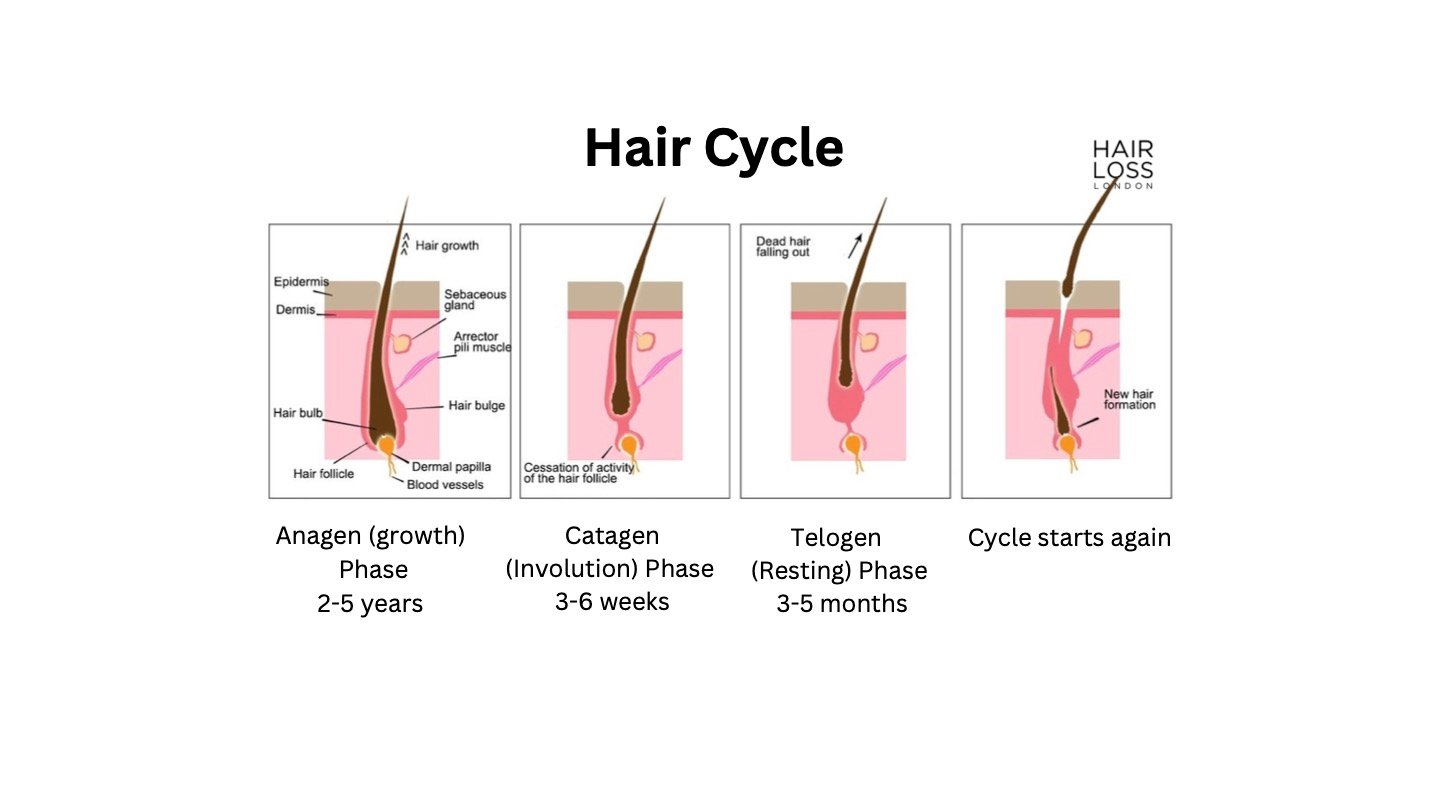Telogen Effluvium (TE)
About Telogen Effluvium (TE)
Telogen effluvium (TE) is probably the most common reason for trichology consultation among women.
It is type of non-scarring alopecia that is characterised by higher shedding of the hair than physiologically expected. It is normal to shed up to 100-150 hairs per day. The reason for hair shedding is alteration of the hair cycle.
There can be two types of Telogen Effluvium (TE) acute and chronic.

Acute Telogen Effluvium (TE):
Chronic Telogen Effluvium (TE):
Normal hair cycle
Hair cycle consist of three phases: growing phase called anagen, then involuting phase called catagen and end of life resting phase called telogen.
Anagen phase of hair growth lasts for about two to five years, followed by catagen stage of cell apoptosis (death) lasting for about three to six weeks and then followed by the end-of-life telogen phase lasting for about three to five months.
At once about 85-90% is in growing stage and about 10-15% of the hair in end-of-life stage.
What happens during Telogen Effluvium (TE) with hair cycle?

Causes of Telogen Effluvium (TE)
Diagnosis
@hls.london #hairloss #hairlossremedy #hairlosssolutions #hairlossjourney #hairlosstreatment #malehairloss #malehairlosstreatment #malehairlosssolutions #hairlossclinic #femalehairloss #femalehairlosshelp #hairlossjourney #prp #prptreatment #prphairrestoration #prphairloss #prphairlosstreatment #prphairlosslondon #prfhairlosstreatment ♬ original sound - HLS London
